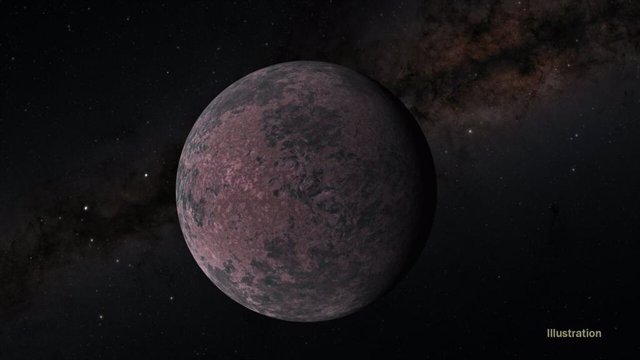Illustration of the terrestrial super-Earth GJ 1252 b, – NASA/JPL/Caltech
Oct. 14 () –
Astronomers from the University of Kansas have discovered that GJ 1252 b, a “super Earth” with scorching temperatures discovered in 2020, it could have a minimal atmosphere or possibly no atmosphere at all.
The planet, which orbits an M-type star, is “the smallest exoplanet so far for which we have such tight restrictions on its atmosphere,” he said. it’s a statement lead author Ian Crossfield, an astronomer and assistant professor at the University of Kansas. Their findings are published in the Astrophysical Journal Letters.
Astronomers often discover and study exoplanets by observing how much light the planets block as they pass in front of their host stars, a technique known as the “transit method.” GJ 1252 b, an exoplanet about 65 light-years away with a radius 1.18 times that of Earth, was discovered using this method by NASA’s Transiting Exoplanet Survey Satellite (TESS) in 2020. Astronomers in this new study observed the exoplanet with the Spitzer Space Telescope before it was removed and were able to take a closer look at the planet. and its atmosphere.
With Spitzer, the team detected a secondary eclipse, which occurs when a planet passes behind a star and the planet’s light, which comes from its own infrared radiation (or heat), as well as light reflected from the star, is blocked.
Astronomers looking for signs of life in the cosmos focus on a number of different details on exoplanets. Many of these details serve as a comparison between the exoplanet and Earth, since Earth remains the only planet where we have confirmed the presence of life. GJ 1252 b is not much bigger than Earth, but it is much hotter since it is closer to its star..
“We are just beginning to learn how often and under what circumstances rocky planets can maintain their atmospheres,” said astronomer and study co-author Laura Kreidberg, Director of Atmospheric Physics of Exoplanets (APEx Department of the Max Planck Institute). for Astronomy “This measurement is an indication that for the hottest planets, dense atmospheres are unlikely to typically survive.”
THE GOLD WOULD MELT
To determine what the exoplanet’s atmosphere might look like (if it exists), astronomers measured the infrared radiation from GJ 1252 b when its light dimmed during a secondary eclipse. These observations revealed the scorching temperature of the planet’s dayside, estimated to reach 1,228 degrees Celsius. In fact, GJ 1252 b is so hot that gold, silver, and copper would melt on the planet.
The expected temperatures of the exoplanet, compared to atmospheric models, suggest that it likely has a surface pressure of less than 10 bar (for reference, Earth’s surface pressure is about 1 bar). To be stable for a long time, it is possible that this exoplanet has an atmosphere with a density like that of the Earth, an atmosphere up to 10 times denser than that of the Earth, or even no atmosphere.
Given its extreme temperatures and low surface pressure, astronomers on this team have predicted that GJ 1252 b probably has no atmosphere. This is currently the smallest exoplanet for which scientists have such a clear idea of its atmosphere.













